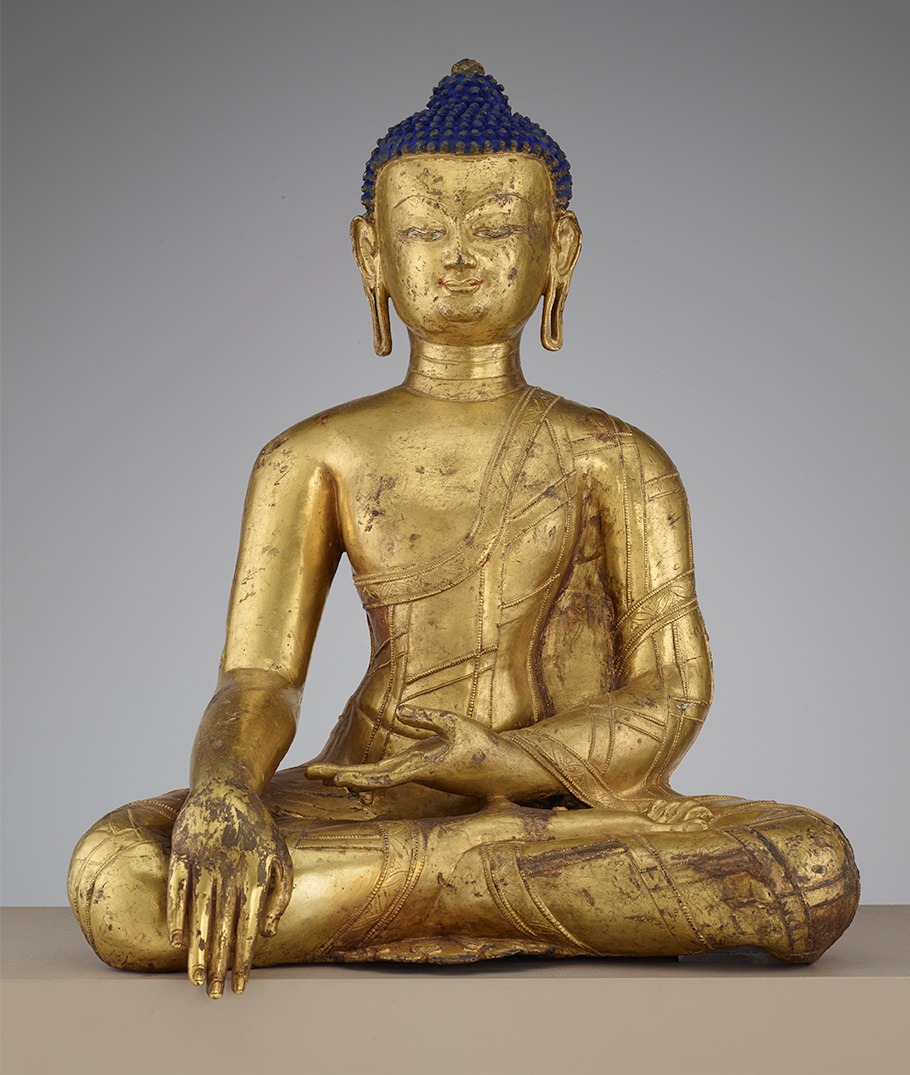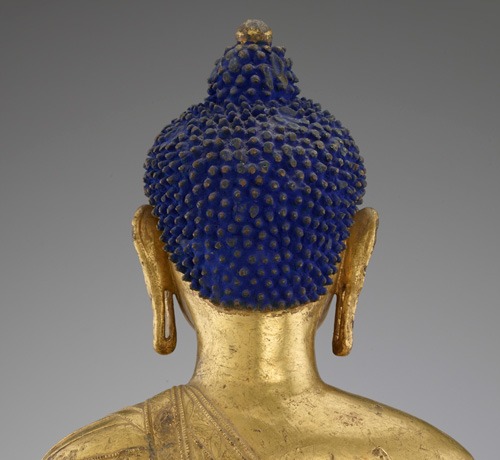 ? ?
? ?
In Tibet, blue was the color of choice for the Buddha’s curls, even though Buddhist texts describe his hair simply as “dark.” Wealthy donors demonstrated their piety and generosity by commissioning large images fashioned from precious materials. Blue pigments, made from the mineral lapis or azurite, were considered luxurious because they were expensive imports. Such opulent goods conveyed the donor’s respect for the Buddha, as well as his or her social status.

Mara, the god of death and desire, tried to prevent the Buddha from attaining enlightenment by disrupting his meditation. His victory over Mara (that is, over death and desire) set the stage for the Buddha’s awakening. Artists represent this miraculous moment by depicting his right hand lowered to call forth the earth goddess, who testified to his countless virtuous past lives. Although he did not actually become the Buddha until the next day, the “earth-touching” gesture serves as a reminder of all the events that led to his enlightenment and buddhahood.